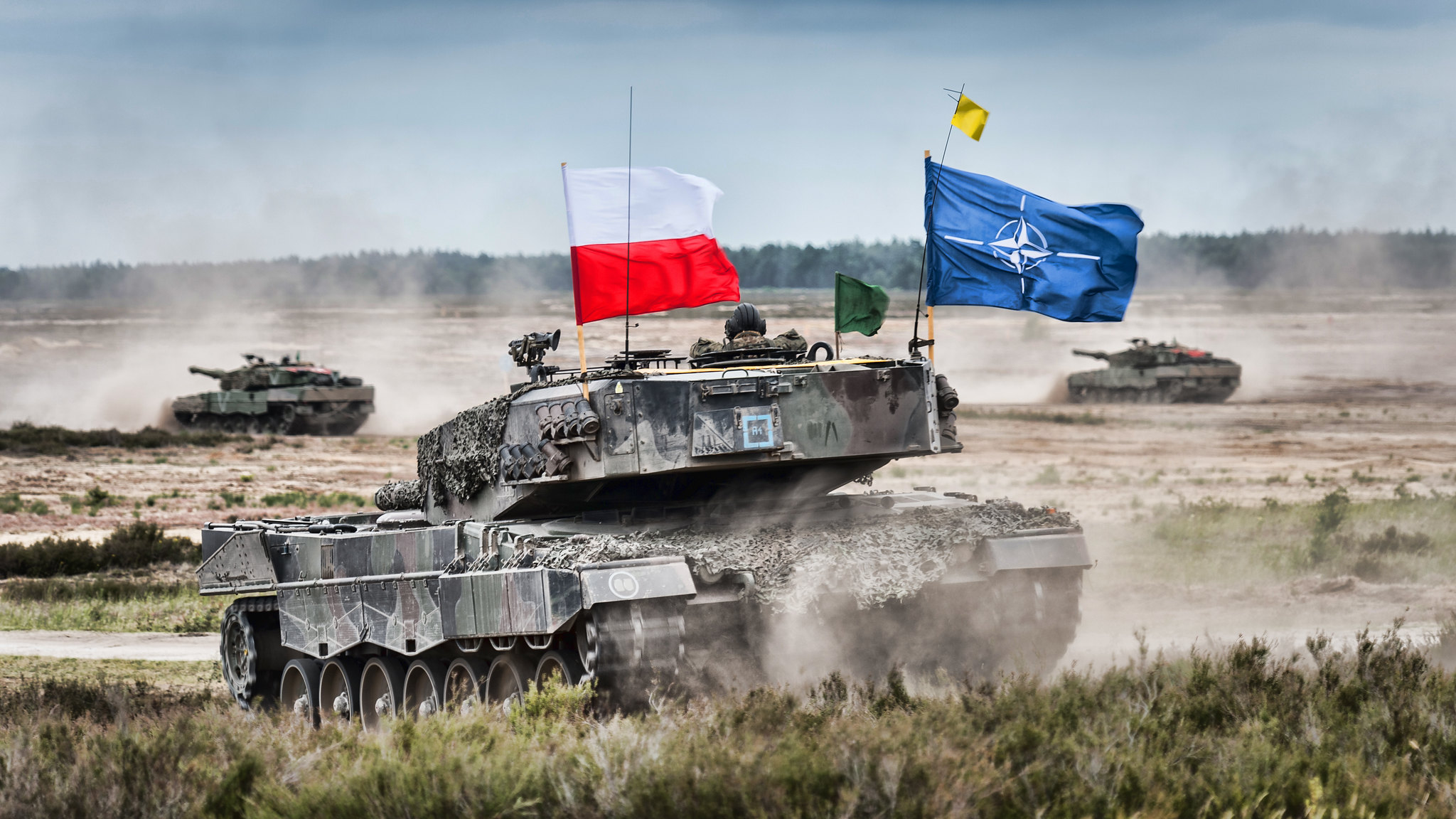Can Oblique Intent Trigger an Armed Attack and Activate Article 5 of NATO?
The recent incident in Poland offers an opportunity to clarify gray areas of the international legal stance related to the conditions surrounding an attack that can ultimately trigger Article 5.

Published by The Lawfare Institute
in Cooperation With

The recent fall of a missile in Polish territory killed two people and caused initial discussions about whether the incident was the result of a Russian attack on Ukraine that should trigger Article 5 of the North Atlantic Treaty. The particular article reads:
The Parties agree that an armed attack against one or more of them in Europe or North America shall be considered an attack against them all and consequently they agree that, if such an armed attack occurs, each of them, in exercise of the right of individual or collective self-defence recognised by Article 51 of the Charter of the United Nations, will assist the Party or Parties so attacked by taking forthwith, individually and in concert with the other Parties, such action as it deems necessary, including the use of armed force, to restore and maintain the security of the North Atlantic area.
Hours after the attack, Russia denied responsibility for the missile. The latest U.S. stance on the situation is that the missile was not launched by Russia, thus no armed attack occurred and Article 5 of the North Atlantic Treaty should not be activated. While the prospects for further escalation have been averted for now, the recent incident offers an opportunity to clarify gray areas of the international legal stance related to the conditions surrounding an attack that can ultimately trigger Article 5.
A clear legal position has yet to be formulated about whether Article 5 can be triggered in cases of an accident. What happens if one country (A)—while pursuing armed conflict against another country or armed group (B)—inflicts damage and harm upon a third country’s civilians and infrastructure (C)? In this case, to the extent that an armed attack needs intention to be substantiated and such intention is lacking regarding the use of force taking place against the interests of the third party, no armed attack has occurred and, thus, there is no latitude for discussion on whether Article 5 should or should not be activated. Of course, based on the articles governing state responsibility for internationally wrongful acts, state C harmed by state A’s use of force is still eligible to ask A for compensation for any damages it may have caused. But this is on a tort law level and not an international criminal law one or inside a framework engaging jus ad bellum.
A more interesting question in light of the recent incident that has also not been addressed in NATO or legal circles is whether oblique intent—or what is referred to as dolus eventualis in international criminal law—can substantiate an armed attack, consequently leading to the triggering of Article 5. This would practically mean that an attack would be asserted not only if state A wants to perpetrate it against a third country but also when state A knows and accepts that an attack against state B may eventually also harm state C.
Jus ad bellum does not differentiate between direct and oblique intent when it speaks about the need for an attack to be intentional. In the realms of international criminal law, Article 30 of the Rome Statute, establishing the mens rea required for international crimes to be asserted, has been read by scholars as able to accommodate also dolus eventualis. Along these lines, even oblique intent can give rise to an armed attack able to trigger Article 5.
This conclusion can be contested, though, on the following grounds: First, the question should not be whether oblique intent can substantiate the existence of an armed attack in abstract—which it can—but whether it can substantiate the existence of an attack of such magnitude and importance that it is able to trigger the right to self-defense. On this, I believe it cannot. Scholars have pointed out how border incidents can qualify as armed attacks but not always as armed attacks that are able to trigger the right to self-defense. As the International Court of Justice has held, such an attack requires an intensity in its actus reus component. It could be argued that the same threshold should also be required for the mens rea component. Use of force may constitute an armed attack even in cases where the attacker shows indifference to the damage and harm caused to a third party. But such armed attack will not be enough in this specific case to give the third party the right to self-defense or to trigger NATO’s Article 5.
The second reason why oblique intent should not lead to Article 5 is embedded in the wording of the article itself. Use of force under Article 5 is meant to be undertaken so that the alliance can restore and maintain the security of the North Atlantic area. If Russia did not wish in the first place to disrupt this security by attacking NATO territory, any indifference toward the implications for Poland of an attack on Ukrainian infrastructure should not be able to trigger Article 5. Here, the question is if the response should be the same in case of one isolated attack or under a scenario of recurrent attacks following the same oblique intent pattern. In other words, could it be argued that if Russia started waging sporadic attacks against Ukraine, inflicting casualties and damage on Polish soil, this situation would pose no threat to NATO security and could thus not beget the need for NATO to resort to Article 5? Although I do not believe that there is a conclusive answer to this question at present, such a case of recurrent attacks would, in my opinion, lead NATO leaders closer to approving the activation of the Article 5 mechanism.
The third reason why oblique intent cannot give rise to an armed attack for the purposes of self-defense or for Article 5 is more teleological and policy oriented. If third parties could lawfully resort to force against states or non-state actors that did not intend to harm them in the first place, this would create two difficult situations on a legal and on an operational basis. On a legal basis, international law would then broaden the scope of actors able to resort to armed force, instead of reducing it. Such a development would run contrary to the U.N. Charter’s objectives, as the latter are embedded in Article 1, regarding the preservation of world peace and security. On an operational basis too, states would be called to keep military operations against the borders of a specific country out of fear of being held accountable if the results of any military activities or targeting operations were to spill over into a third country. This could cause severe operational issues, for example, in cases of small countries where, by definition, the distance of their center from bordering countries is not large, as well as in cases where armed groups operate exactly from the border area and focus their military operations there, as has been the issue with Israel and Hezbollah.
In the context of the armed conflict in Ukraine, the question of whether states can or cannot undertake military activities in certain bordering areas has wider ramifications for other potential ideas, such as a NATO-imposed no-fly zone over Ukraine. The current conflict and the latest incident in Poland show how carefully the international community should consider whether or not to apply any international law paradigms.





